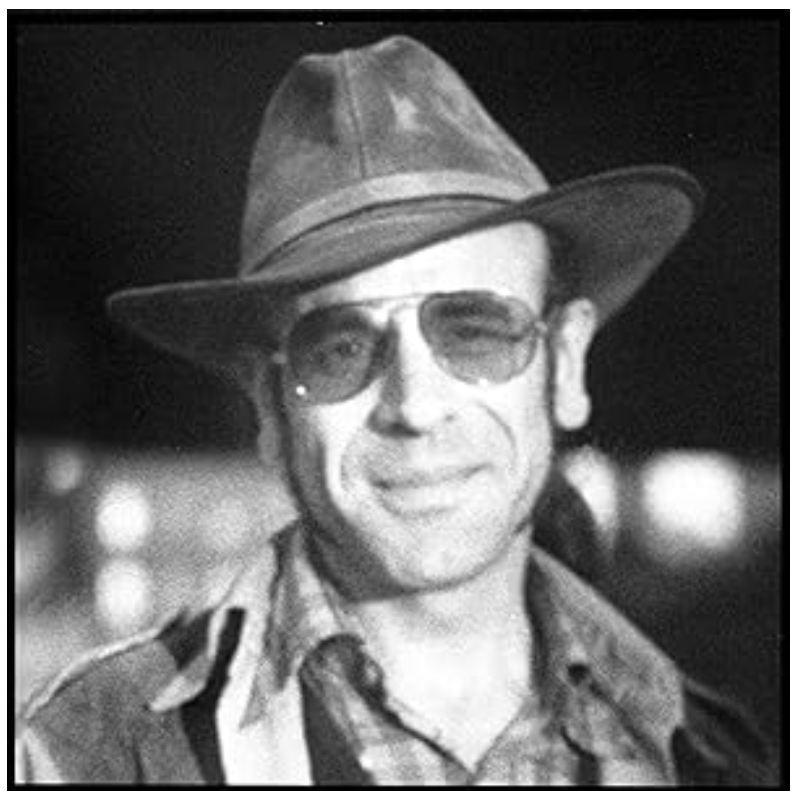
Joe Papin, April 7, 1980, New York Daily News
In order to explain the printing plates, I have researched the process and history of printing from the late 1950s to the early 1990s, a time period of enormous change. Just as the specter of cameras in the courtroom informs the story of courtroom art, the history of labor relations is inextricably wound up in the story of these plates. Each of these processes required a different set of highly developed skills that combined to form the finished project.
The process of creating a plate includes multiple steps which needed to be repeated for each image and each page of a newspaper or magazine that was printed “in relief” (“where the printing surface is cut away so that the image alone appears raised on the surface” [www.moma.org]), in this case using photoengraving and letterpress with “hot type” typesetting.
Step one: The drawing, or photograph, is created. If it is a black and white line drawing, there is no need to photograph the drawing through a half-tone screen. Shaded drawings, drawings on colored paper, and photographs require a half-tone screen that appears as many little dots.

Joe Papin in Headlines and Deadlines, by April Koral, 1981 (book about the New York Daily News)
I am using the following illustration as an example of the process. The drawing is from an article, illustrated by Joseph Papin, that was published in National Review on October 31, 1967, in the days when confirmed liberals like Joseph Papin could work with confirmed conservatives like William F. Buckley.
The drawing is done in pen and ink on paper:

The drawing is photographed in a copy camera and a negative is made:

A stripper, or negative turner, cuts through the emulsion into the celluloid base of the copy negative and the film is stripped from the celluloid base. The thin strip of emulsion is then mounted to a plate of glass with water and the mounted emulsion is placed against a zinc plate that has been coated with a photosensitized agent (The Art and Technique of Photoengraving, 1950s, https://vimeo.com/134626010). A strong light directed at the “sandwich” of the negative and the photosensitized zinc plate, which results in the image being transferred to the zinc plate.

The light shining through the negative onto the plate hardens the photosensitized emulsion on the zinc plate (as shown on the facsimile of the zinc plate above), so that when the plate is put into acid, the area shown in black is etched away from the plate by acid, leaving the lines remaining:

The plate continues to be etched with acid until the depth of engraving is sufficient to make a print that reflects the original drawing. Imperfections are removed and the plate is cut to size.

Areas of zinc that are not needed are trimmed away and any hand engraving is completed (note the light silver lines in the plate below; the zinc was removed to eliminate any high spots that might accidentally print). The plate is mounted on wood, either with small nails or with adhesive:

The plate is inked and a proof is printed in order to check it. Once the plate is placed in the form with the typeset text of the story, a stereotype is made:

https://theprintedandthebuilt.wordpress.com/2015/02/09/stereotype-stereotyping/
“A Stereotype, also known as a cliché, stereoplate or just a stereo is a metal plate used for printing instead of the original. According to some sources the process was invented in Edinburgh in 1725 by the goldsmith William Ged. In the nineteenth century the stereotype led to the mass-producing of printing plates. This enabled multiple copies to be sent to other printers and newspapers, enabling larger numbers of identical images to be reproduced.
“Stereotypes are made by locking the type columns, illustration plates, and advertising plates of a complete newspaper page in a form and molding a matrix, or mat, of papier-mâché or similar material; the dried mat is used as a mold to cast the stereotype from hot metal. A stereotype plate is much stronger and more durable under the press run than would be the composed page of type. It has now been replaced, however, by photopolymer (photosensitive plastic) and lithographic plates.” https://theprintedandthebuilt.wordpress.com/2015/02/09/stereotype-stereotyping/
Note that some publications were printed directly from the original form (i.e., without a stereotype being made). I have not been able to find information on what the different NYC magazines did in terms of their printing processes. I wanted to illustrate this process because I know that assignments for the Daily News definitely included making a stereotype and drying it in a curved shape so that when the page was caste in molten metal it was able to curve around the printing press. Two other options for printing – gravure (where the lines are etched down into the plate rather than stick up) and offset lithography (where the image is “offset” to a rubber roller that comes into contact with the plate) – were sometimes used.
My facsimile of what a stereotype mat of this page would have looked like (it is “right way round”):

My facsimile of the plate of the entire page in metal, made by pouring metal into the papier-mâché like stereotype mat. (Note that the letters are backwards so that the final printed page will be correct):

And finally, the printed page:


Leave a Reply